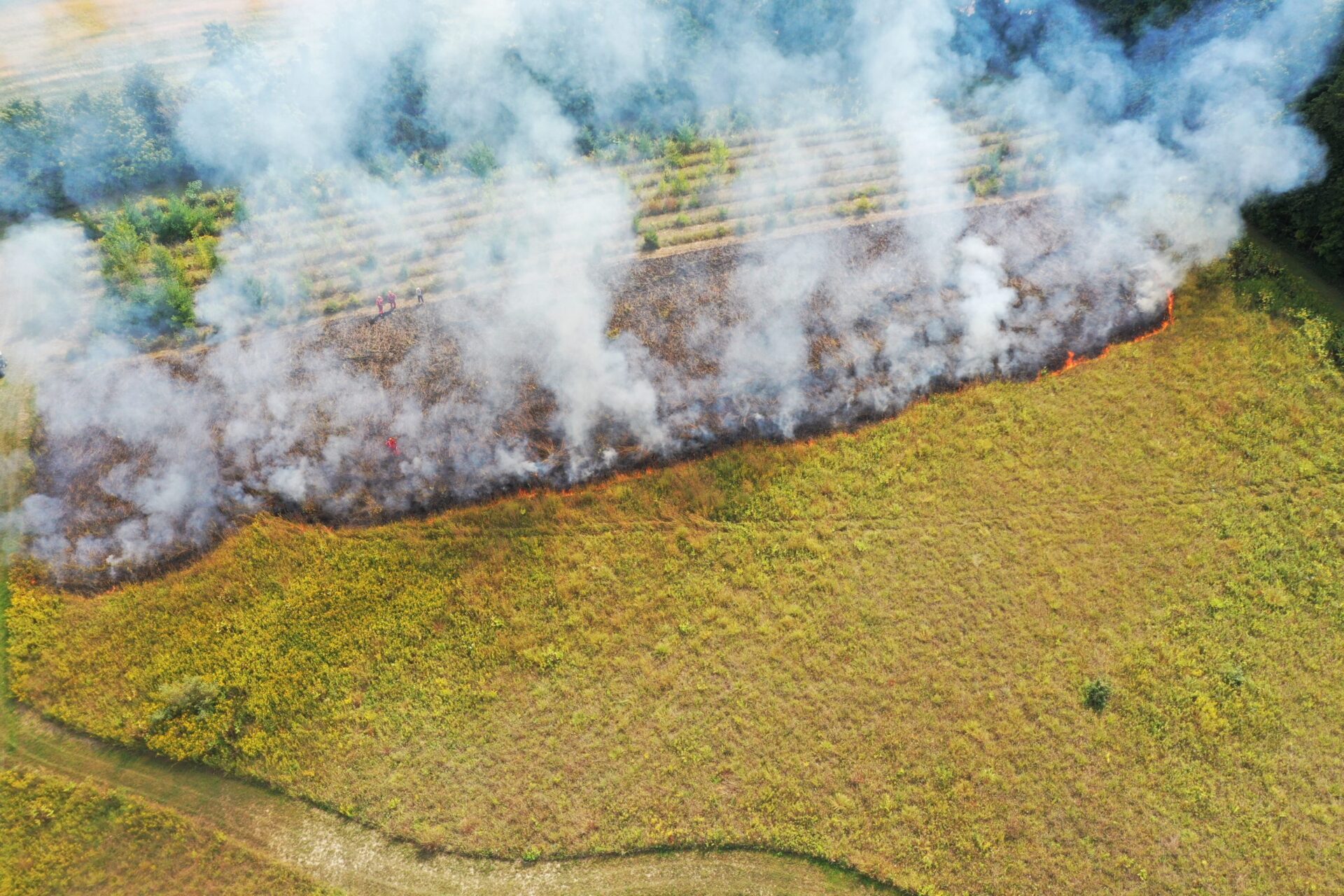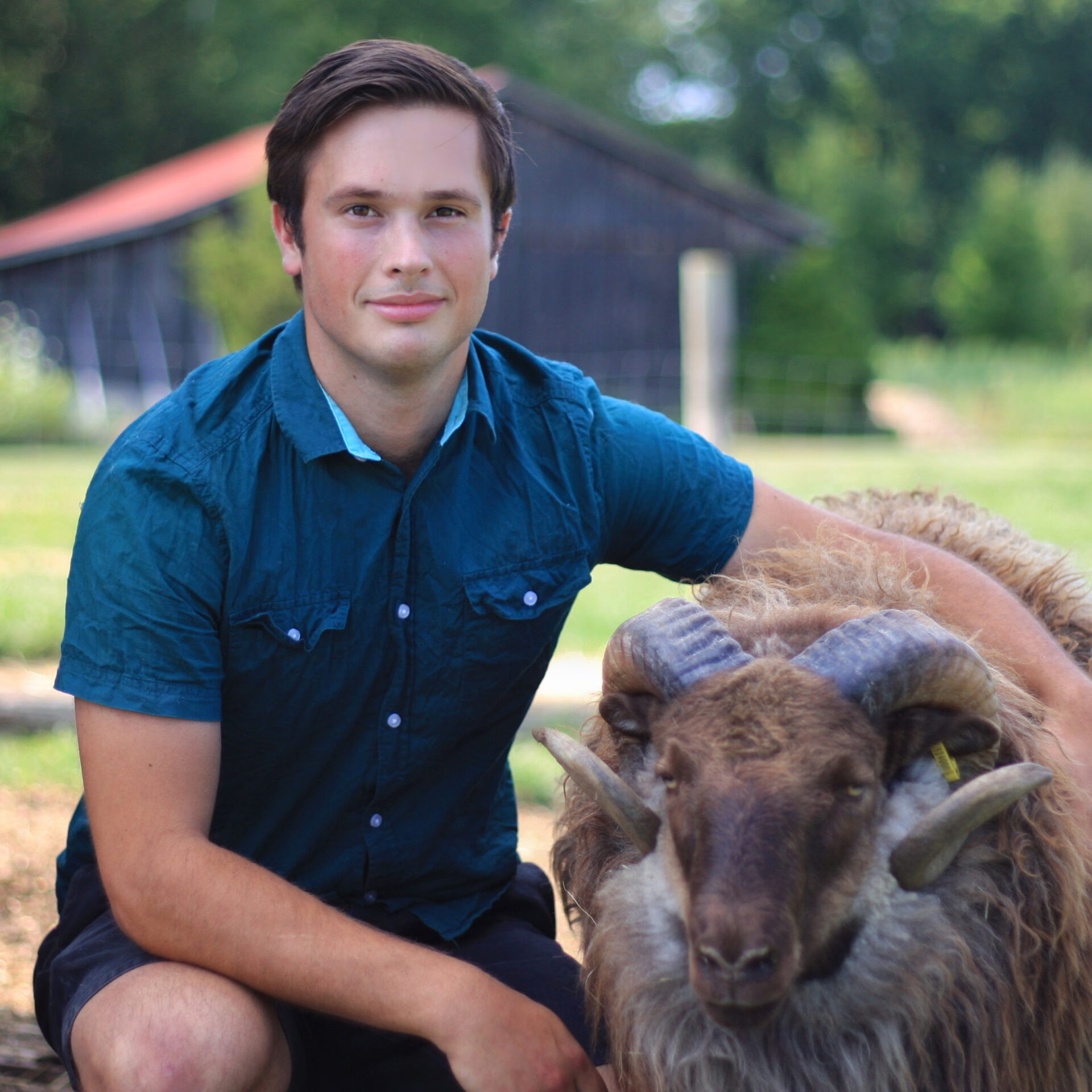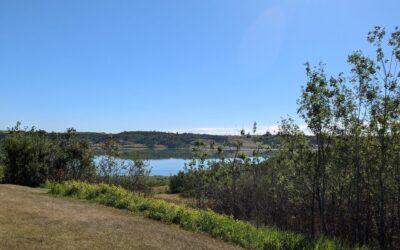ALUS Middlesex Coordinator, Peter Moddle, on why prescribed burns are an important tool for maintaining tallgrass prairie ecosystems.

In September, ALUS Middlesex coordinated a prescribed burn on a tallgrass prairie, with support from the Grassland Stewardship Initiative (GSI), a grant offered through Grasslands Ontario.
When people hear about prescribed burning for the first time, a lot of questions may come to mind: Is it safe? Is it good for the environment? Why burn at all?
If you’re looking for answers, you’ve come to the right place!
Fire plays an important role in North America’s ecosystems. Historically, fires would be ignited naturally by lightning or managed intentionally by Indigenous peoples. These fires help to maintain fire-dependent ecosystems, like tallgrass prairies, by removing woody vegetation and encroaching trees. In contemporary times, prescribed burns are carefully planned and managed by professionals and only carried out when the fire will not pose a threat to public safety or the environment. Prescribed burns are a valuable practice for maintaining and restoring fire-dependent ecosystems. They remove invasive species and built-up woody debris. Eliminating the debris is important, as it can crowd out desirable vegetation and potentially fuel uncontrolled wildfires.
ALUS Middlesex recently had the opportunity to play a part in ecosystem management by coordinating a prescribed burn of an 11-acre tallgrass prairie. This site was planted in 2011 on a participating landowner’s farm and has since grown into a beautiful prairie full of native flowers and grasses. The site is also home to grassland birds like the at-risk Bobolink. Since the project’s establishment, some small trees and shrubs, as well as invasive herbaceous species like ragweed, had started to move into the prairie. Without intervention, the woody vegetation and invasive species can take over a tallgrass prairie and disrupt the ecosystem.
The landowner who has continued to manage this project as part of the ALUS program for over a decade and contacted ALUS Middlesex about managing the tallgrass ecosystem. ALUS Middlesex contracted the services of Lands and Forest Consulting to carry-out a prescribed burn. On-site meetings with the landowner and the burn boss were held to gather information about site details (e.g. existing fuel load, project size) and to identify the landowner’s objectives. This detailed plan is known as a prescription. The prescription outlines different aspects of the burn, including fire intelligence (eg. fuel load, weather, boundaries), ignition, suppression and safety.
The application of a prescribed burn in this situation is a preliminary management strategy, used to compliment other management tools, in order to maintain a thriving tallgrass prairie.
The landowner’s long-term commitment to this ecosystem and to the ALUS program exemplifies the success of farmers as stewards of the environment. By initiating this process, the landowner is continuing a process of managing this ecosystem, creating benefits for the environment: killing invasive herbaceous and small woody vegetation, depositing nutrient-rich ash and allowing for more improved soil moisture retention.
The blackening of the ground from a burn also helps to warm the soil, helping to reinvigorate growth of native warm-season grasses and flowers. Regular maintenance of a tallgrass prairie ensures a healthy and functioning ecosystem that supports many endangered and threatened species of flora and fauna. Although a single burn that is properly timed is all that is required to meet the objectives of certain land management plans, it may take multiple burns over several years to achieve desired objectives of keeping grassland ecosystems free of unwanted vegetation.
Prescribed burns have become increasingly important as the need to control wildfire outbreaks have grown over the last century, while new knowledge has reduced barriers to prescribed burns. Moving forward, the wider execution of prescribed burns and tactical management of wildfires in fire-dependent ecosystems will require improved integration of science, policy and organizational partnerships. As well, a greater societal acceptance of prescribed burns, so that the general public doesn’t see the practice as dangerous or harmful to the landscape, will be needed. These goals can be achieved through advocacy, education and public involvement in land-management issues.
ALUS Middlesex, through its community driven work, focuses on growing biodiversity throughout Middlesex County, and has positioned itself as a trusted organization to help implement safe and sustainable management practices in our communities. If you are interested in planting a tallgrass prairie project or maintaining an established one, please get in touch!
ALUS Middlesex Coordinator

Peter Moddle
8348 Longwoods Road
Mount Brydges, ON N0L 1W0
[email protected]
T: 519-264-2420
C: 226-448-4274



